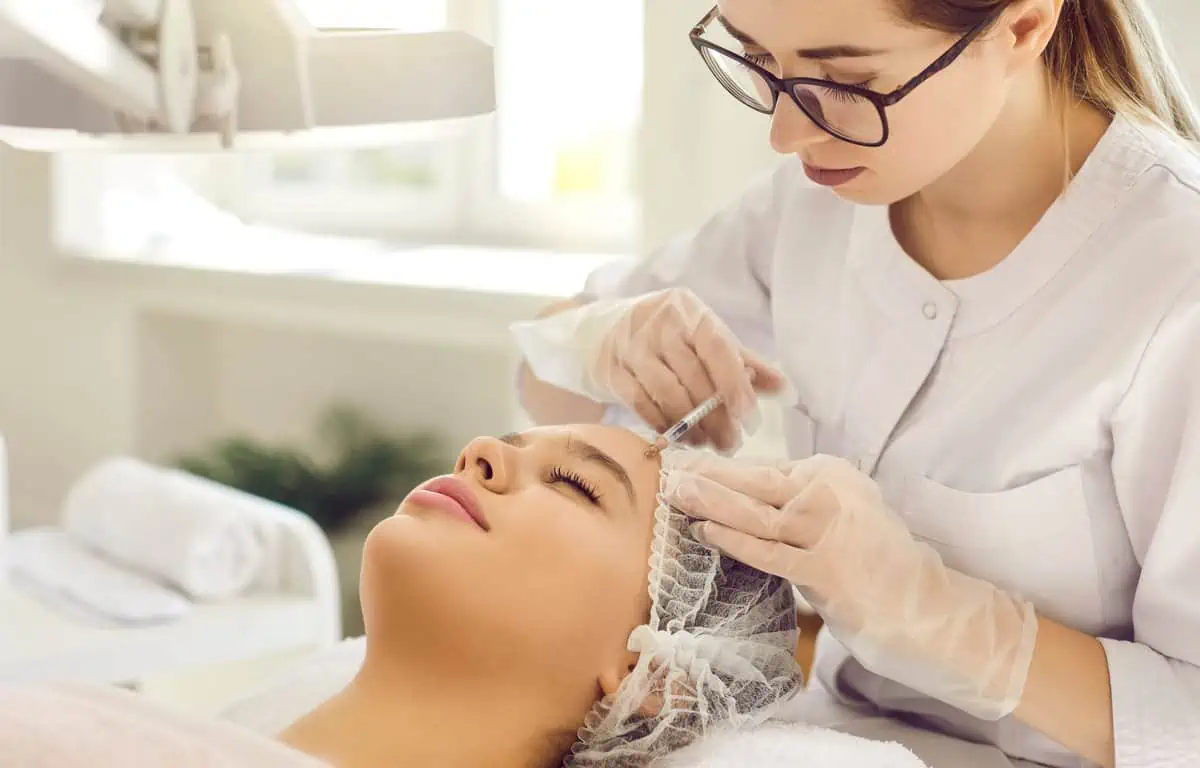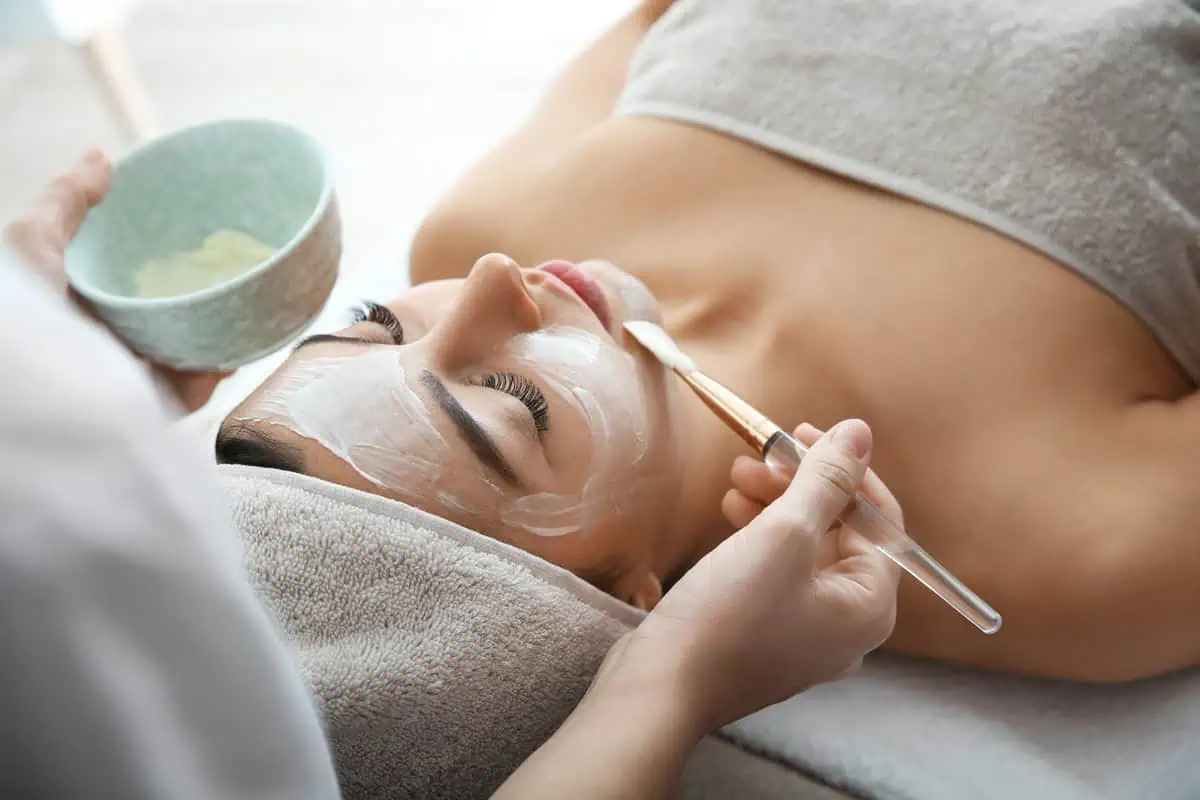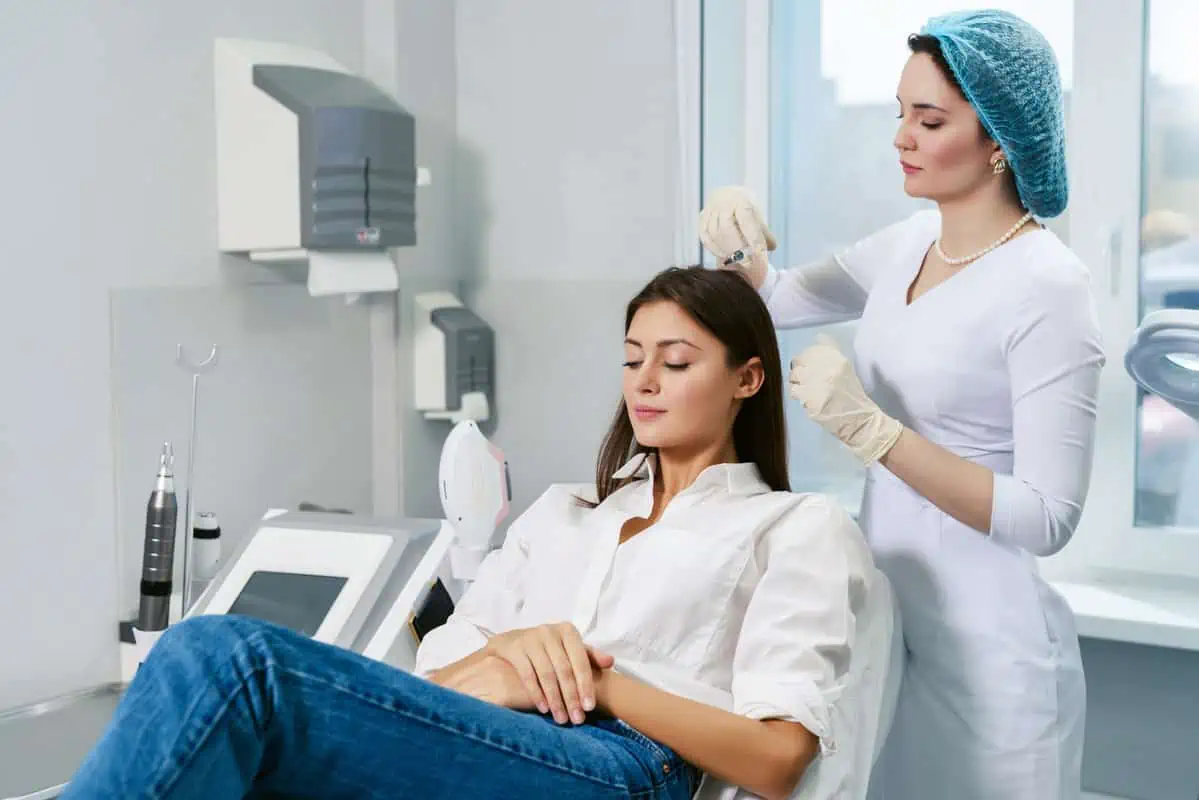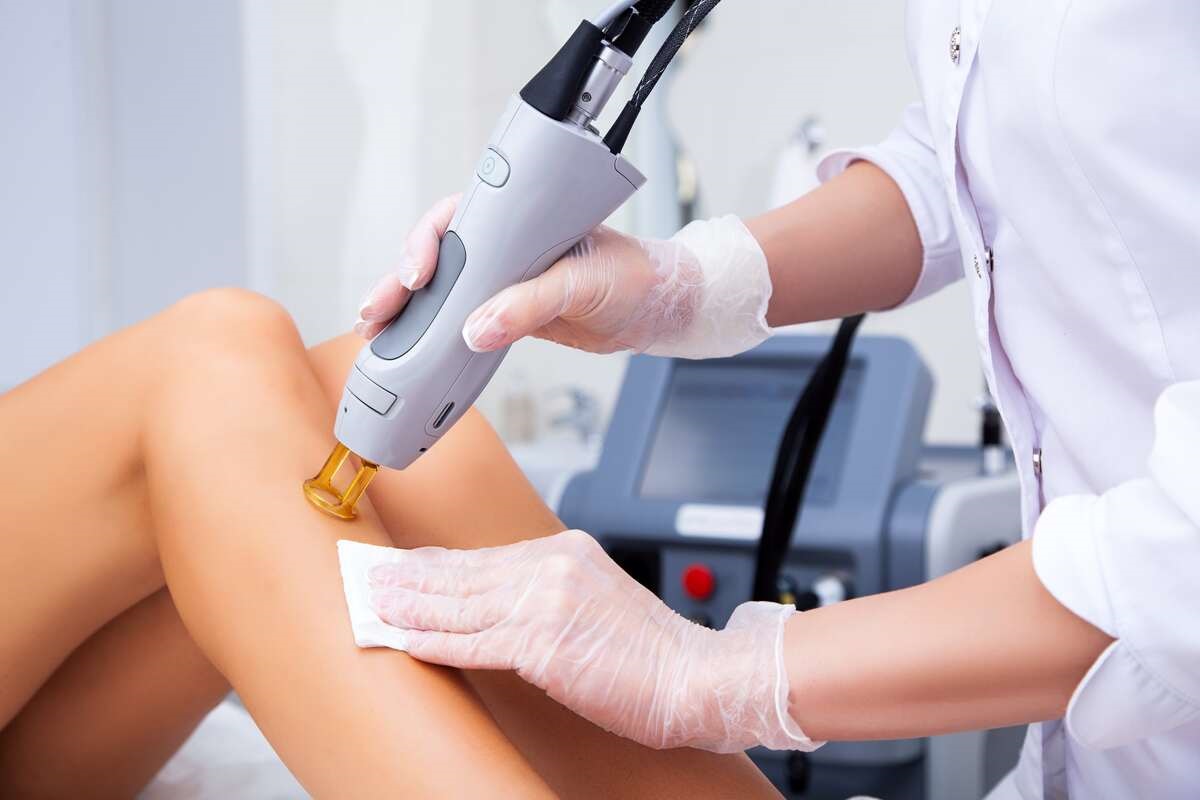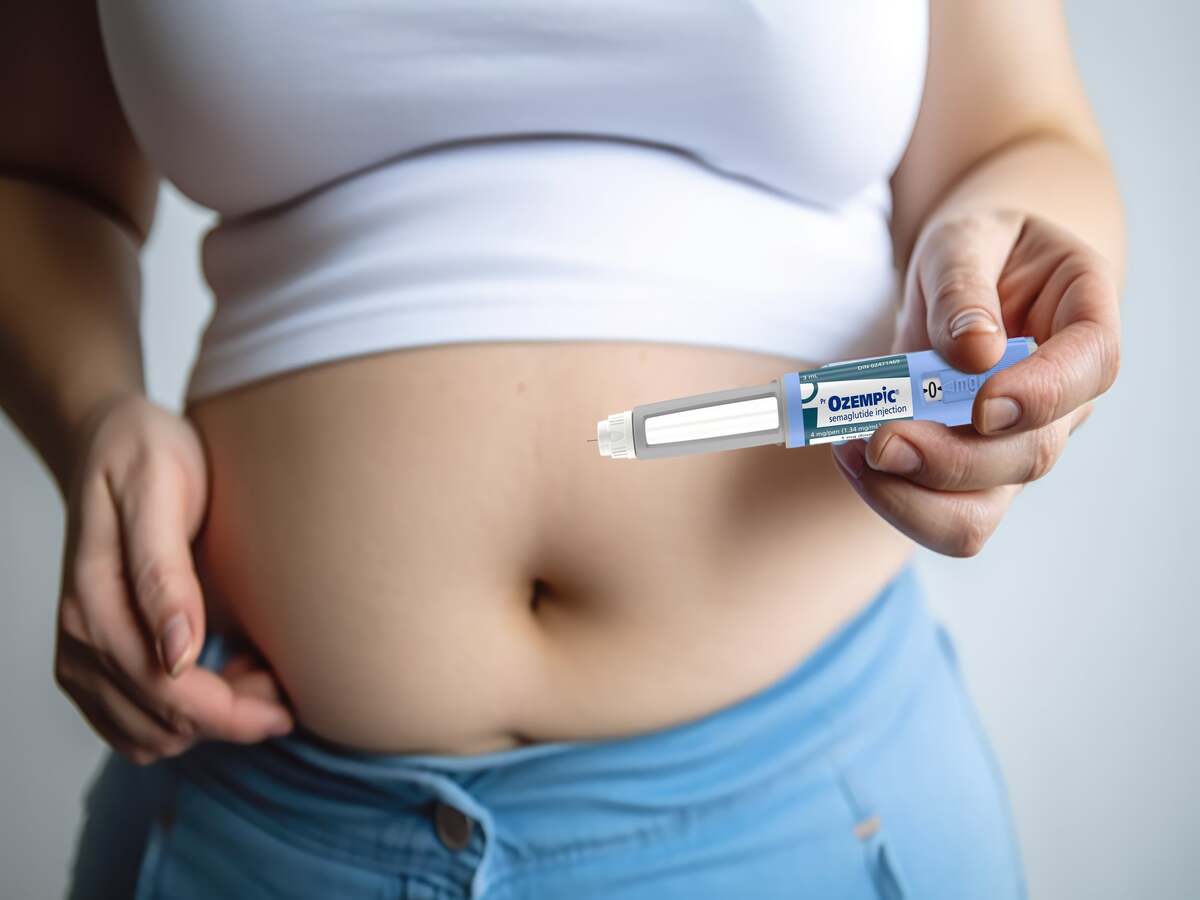Sculptra is an injectable cosmetic treatment that stimulates collagen growth in the skin and restores lost volume. It contains poly-L-lactic acid (PLLA), which is a biocompatible synthetic material that has been used medically for many years. Sculptra is commonly used for facial rejuvenation and is FDA-approved for treating wrinkles and folds, particularly in the lower face and around the nasolabial folds, marionette lines, and chin.
It encourages the body’s natural collagen production, which helps to improve the skin’s texture, elasticity, and volume over time. The treatment is typically administered in a series of sessions spaced several weeks apart. Results can last up to two years or more, depending on individual factors such as age, lifestyle, and genetics.
Candidates for Sculptra
Sculptra treatment is typically recommended for individuals experiencing volume loss and wrinkles in the lower face and other areas and looking for a non-surgical, minimally invasive option for facial rejuvenation. Candidates for Sculptra treatment may include:
- Individuals with age-related volume loss: Sculptra can benefit individuals who have lost facial volume due to the natural aging process, resulting in sagging skin, wrinkles, and folds in the lower face, such as the nasolabial folds, marionette lines, and chin.
- For those with decreased skin elasticity: Sculptra can help improve skin elasticity, making it a good option for individuals who have noticed a loss of skin firmness and elasticity, which can contribute to sagging and wrinkles.
- Patients seeking gradual and natural-looking results: Sculptra is designed to work gradually, stimulating collagen production over time, which can result in natural-looking and subtle improvements. Individuals who prefer a gradual and nuanced approach to facial rejuvenation may find Sculptra a good fit.
- Those looking for a durable option: Sculptra is known for its long-lasting results, with effects lasting up to more than two years, which can appeal to individuals looking for a long-term solution for their facial rejuvenation needs.
- Generally healthy individuals: Candidates for Sculptra should be healthy and have realistic expectations about the treatment outcomes. An initial step is to consult with a qualified healthcare provider to assess your candidacy for Sculptra and to discuss any potential risks or contraindications.
- Those seeking non-surgical options: Sculptra is a non-surgical treatment that can appeal to individuals who prefer to avoid invasive procedures such as surgery. Sculptra can provide noticeable results without surgery, incisions, or downtime.
Treatments Needed
The number of Sculptra treatments needed can vary depending on individual factors such as the desired results, the severity of volume loss and wrinkles, and the response of the patient’s skin to the treatment. Typically, Sculptra is administered in a series of treatments, usually spaced several weeks to months apart. Most patients receive three to four Sculptra treatments to achieve their desired results.
During each Sculptra treatment session, the healthcare provider injects the Sculptra product into the targeted areas of the face using a fine needle. The product is then massaged and distributed evenly to stimulate collagen production. Over time, the poly-L-lactic acid (PLLA) in Sculptra stimulates the body’s natural collagen production, gradually improving skin volume, texture, and elasticity.
Remember that Sculptra is not a one-time and quick-fix treatment, as the results gradually improve. Additionally, maintenance treatments may be recommended after the initial series of Sculptra treatments to help maintain the results. The frequency of maintenance treatments can vary depending on individual factors and the results’ longevity.
Results
The results of Sculptra can vary from person to person, but in general, Sculptra is known for providing long-lasting results that can last up to two years or more. However, it’s important to note that Sculptra does not give immediate results like other dermal fillers. Sculptra works gradually by stimulating collagen production, so the results develop over time.
After each Sculptra treatment session, the poly-L-lactic acid (PLLA) in Sculptra stimulates the body’s natural collagen production, which helps to restore lost volume and address other skin issues. The results of Sculptra usually become more noticeable over several weeks to months as the newly formed collagen integrates into the skin.
The longevity of Sculptra results can vary depending on individual factors such as age, lifestyle, genetics, and treatment area. Some patients may experience effects beyond two years, while others may require maintenance treatments sooner. It’s essential to remember that individual responses to Sculptra can vary, and multiple treatments may be needed to achieve and maintain the desired results.
To maintain the results of Sculptra, your healthcare provider may recommend periodic maintenance treatments to continue stimulating collagen production and prolong the effects. You must follow your healthcare provider’s recommendations for maintenance treatments and have regular follow-up appointments to assess the results and determine the need for additional treatments.
Difference from Other Facial Fillers
Sculptra is a unique type of facial filler that is distinct from other dermal fillers in several key ways:
- Mechanism of action: Sculptra works differently from other facial fillers. While most dermal fillers are made of hyaluronic acid, a naturally occurring substance that provides immediate volume to the treated area, Sculptra is made of poly-L-lactic acid (PLLA), a biocompatible synthetic material. Sculptra stimulates the body’s natural collagen production, which helps restore lost volume and gradually improve skin texture and elasticity. The results of Sculptra develop slowly and can last longer than other fillers.
- Longevity of results: Sculptra is known for its long-lasting effects. While other dermal fillers typically provide immediate results that can last several months, the results of Sculptra can last up to more than two years. Sculptra’s collagen-stimulating action helps to create a foundation of natural-looking volume that can endure over time.
- Treatment approach: Sculptra is typically administered as a series of treatments, usually spaced several weeks to months apart, as opposed to other fillers that may provide immediate results with a single treatment.
- Versatility: Sculptra can be used in various areas of the face, including the cheeks, temples, jawline, and chin, to restore volume and improve skin texture and elasticity. Sculptra can also treat other aesthetic concerns like acne scars and facial depression.
- Non-surgical and minimally invasive: Like other dermal fillers, Sculptra is a non-surgical and minimally invasive treatment option for facial rejuvenation. It does not require incisions or general anesthesia, and minimal downtime is associated with the treatment.
- Gradual and natural-looking results: Sculptra provides gradual results that develop over time, resulting in a natural-looking improvement. Other fillers may give immediate consequences, which can be more noticeable initially but require more frequent treatments to maintain the effects.
Side Effects
As with any medical procedure, Sculptra injections may have potential side effects. It’s important to note that the incidence and severity of side effects with Sculptra are generally rare and mild. Common side effects of Sculptra may include:
- Allergic reactions: While rare, allergic reactions to Sculptra can occur. Signs of an allergic reaction are the following: rash, itching, swelling, or difficulty breathing. You should notify your healthcare professional immediately if you experience these symptoms.
- Injection site reactions: This may include temporary redness, swelling, bruising, tenderness, or discomfort at injection sites. These side effects are usually mild and resolve independently within a few days to a week.
- Other potential side effects: Sculptra may have less common side effects, such as infection, asymmetry, overcorrection, or under correction. A qualified healthcare provider can manage these side effects.
- Nodules or lumps: Sculptra is designed to stimulate collagen production, and in some cases, small nodules or lumps may form under the skin at the injection site. These are typically not visible and are only detectable by touch. In rare cases, larger nodules or lumps may form, requiring further evaluation and management by a qualified healthcare provider.
Check out Sculptra in My Aesthetic Studio and contact them now to reserve a spot!


